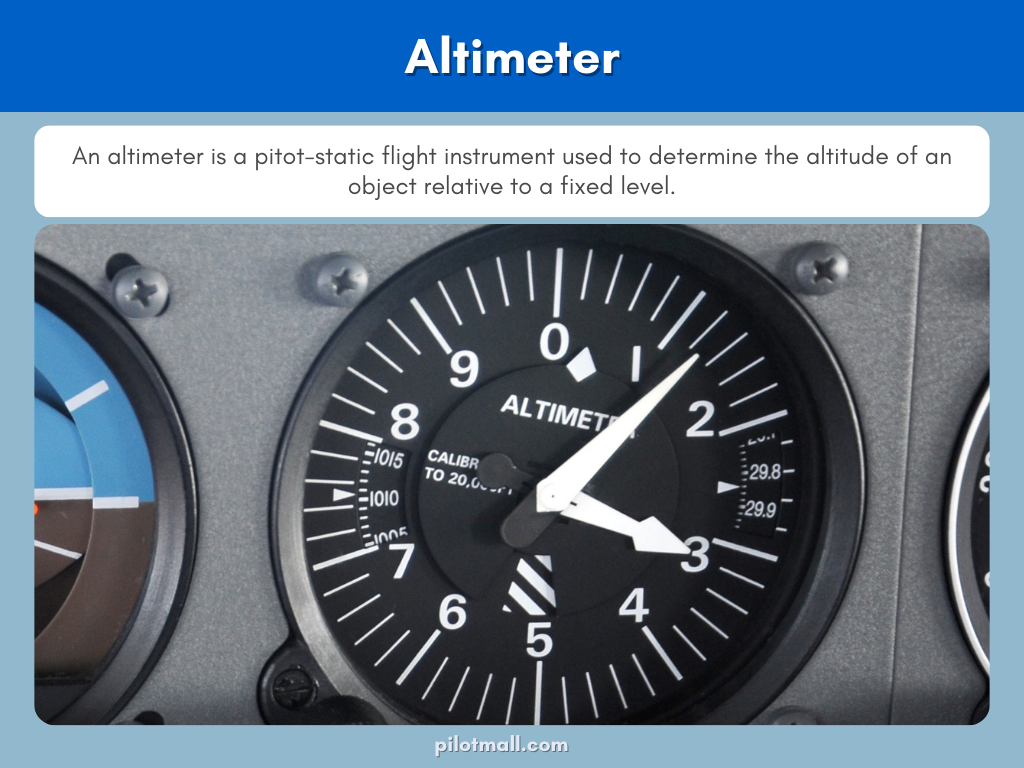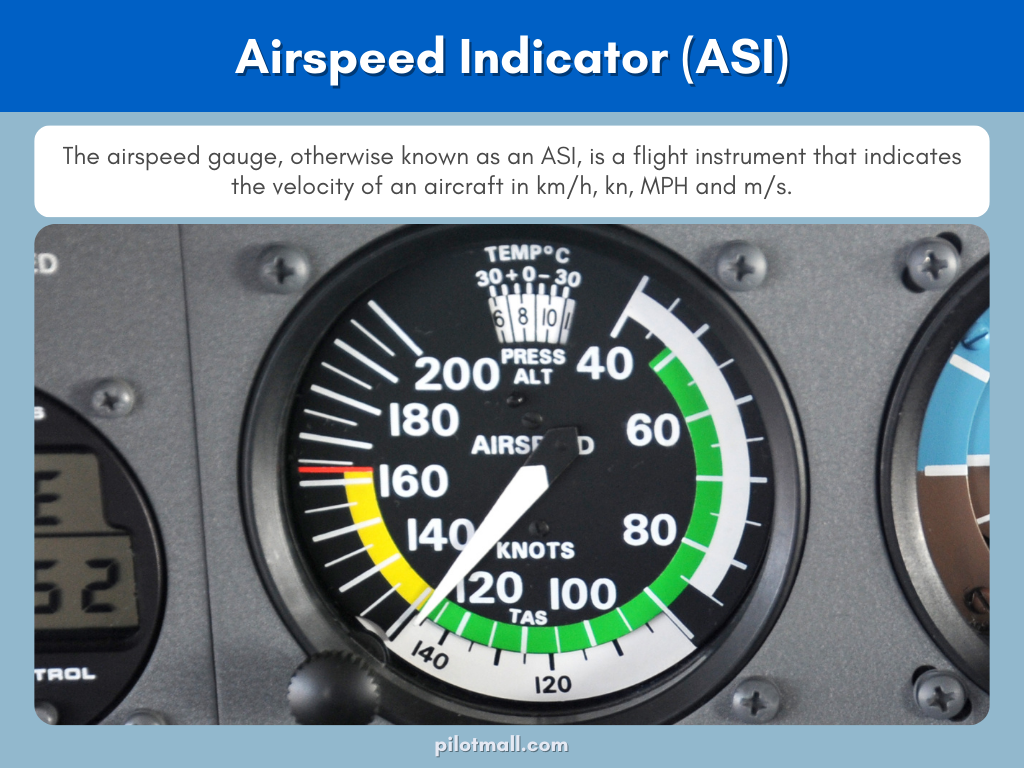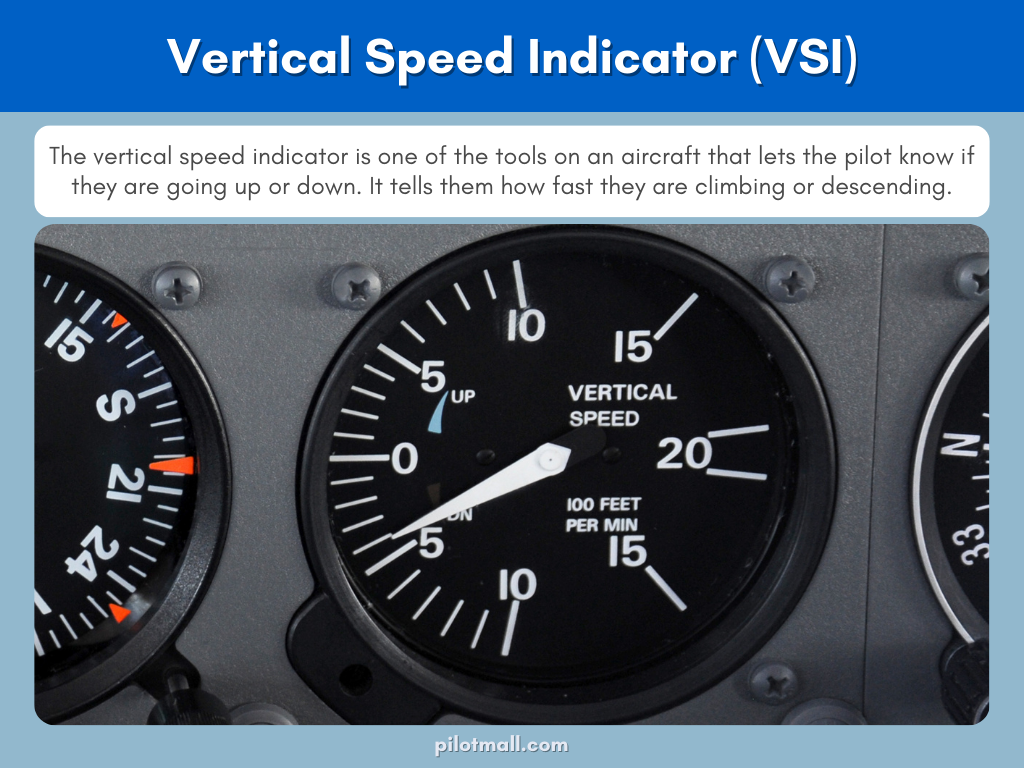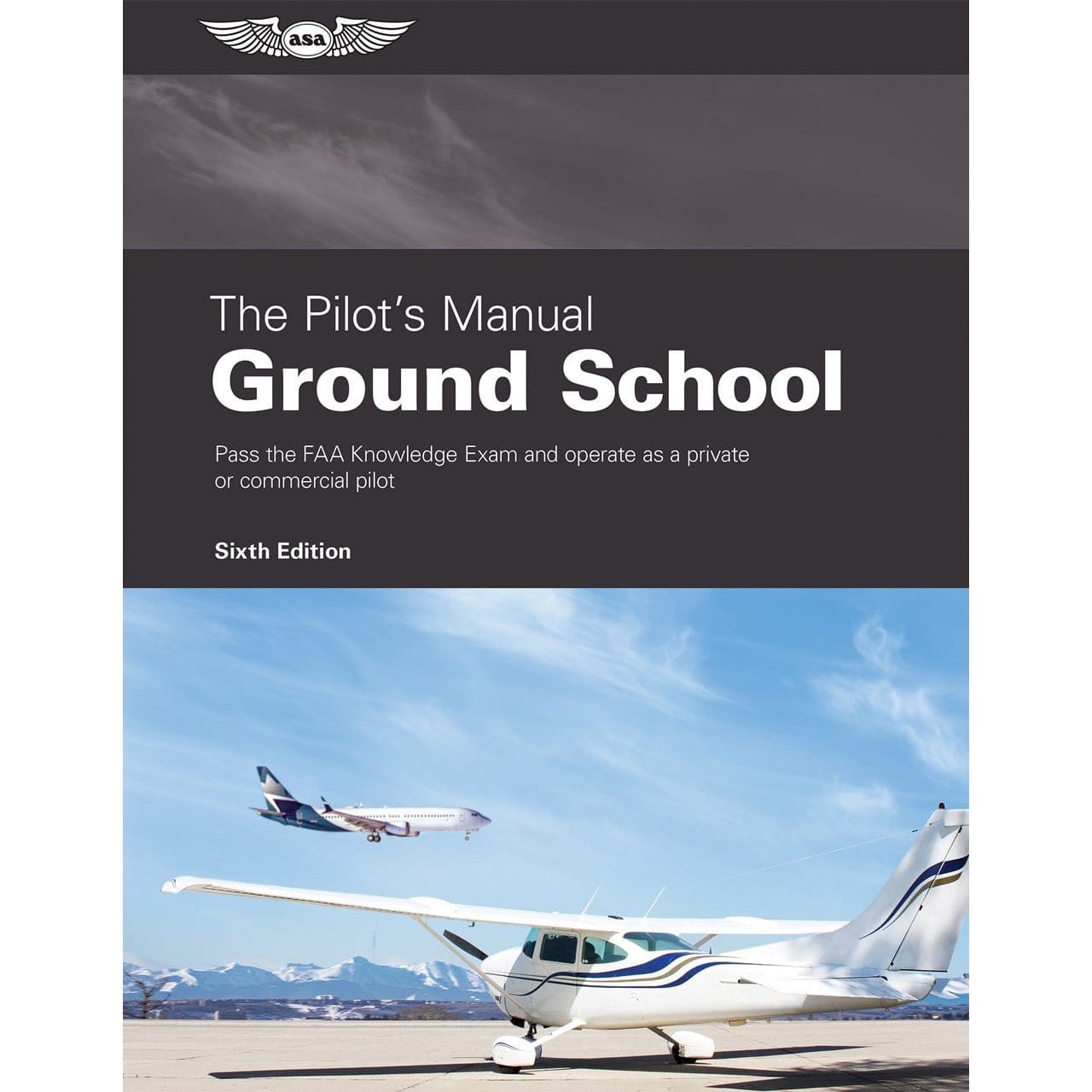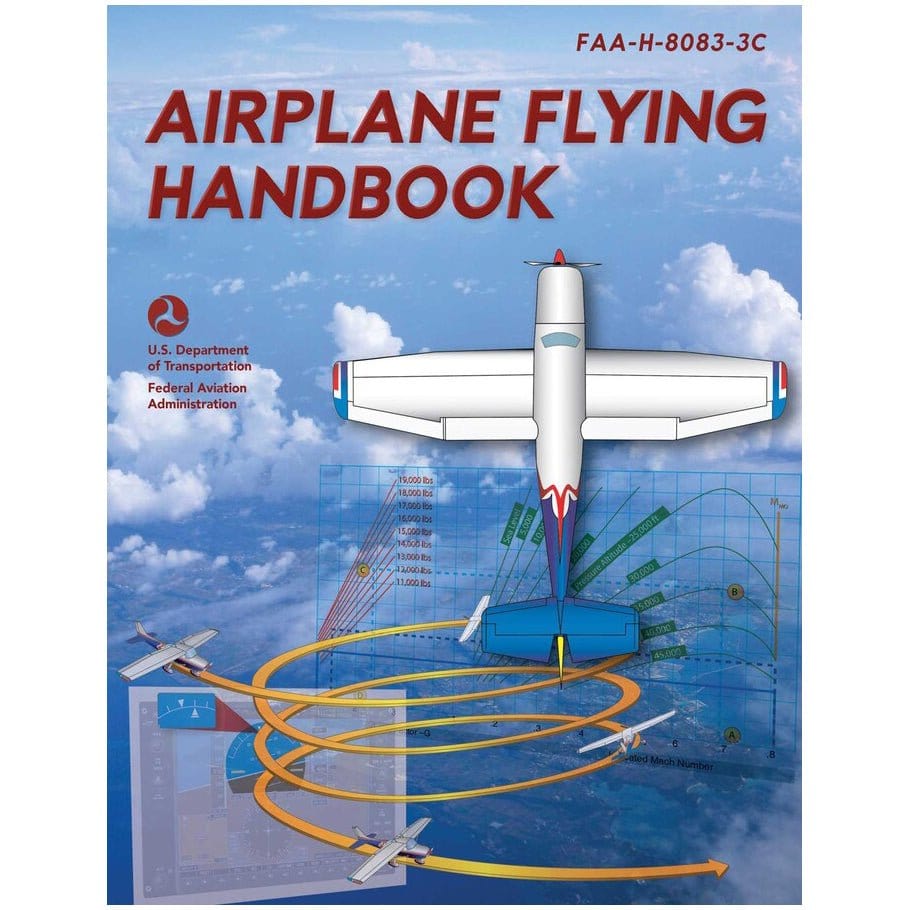When you hear “aircraft instruments,” what do you think of? What probably comes to mind are the flight instruments you see front and center during each flight. The 6-pack is certainly important, but it is just one part of a bigger system.
Today we’re walking you through an overview of all three aircraft instrument categories and including links to our detailed guides on key instruments. By the time you’re done reading, you know all the most important pilot gauges and screens.
We’ll start at the macro level with instrument categories.
3 Categories of Aircraft Instrumentation
Airplane instruments provide real-time data that pilots use to monitor their plane’s status and to safely complete their flights.
Aircraft instruments are grouped into these three categories:
- Flight Instruments
- Engine Instruments
- Navigation Instruments
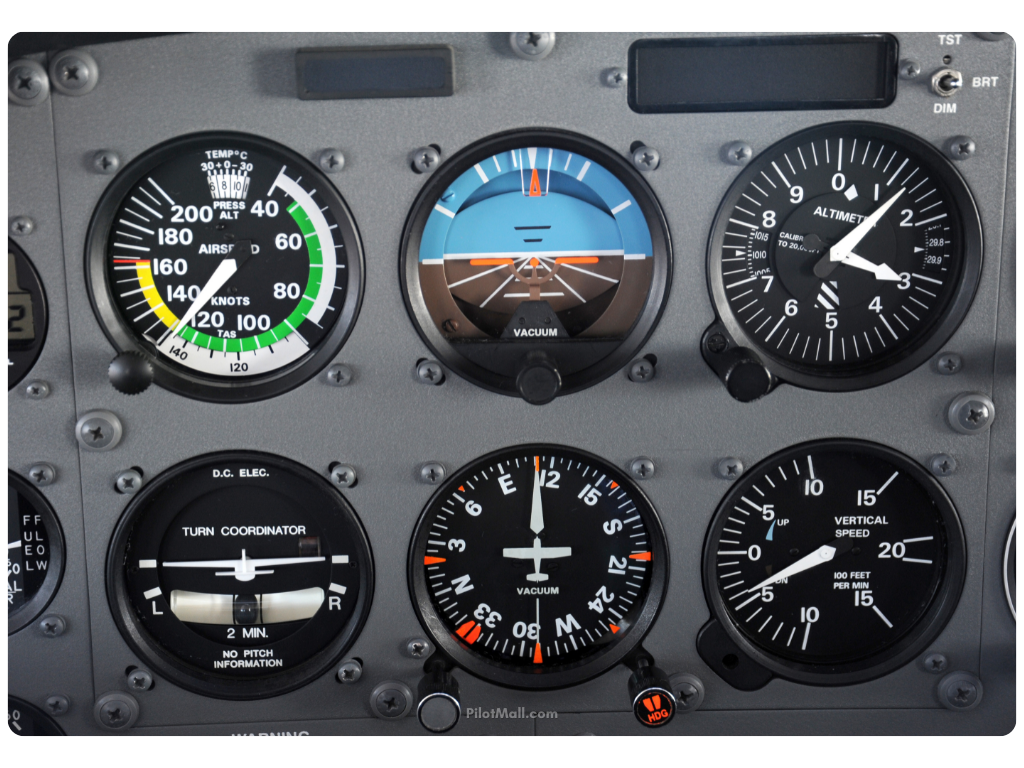 Flight Instruments
Flight Instruments
We’ll start with the category of instruments that most of us think of when someone mentions aircraft instruments. The six basic flight instruments are often simply called the “6-pack.” Half of the flight instruments use the pitot-static system and the others are gyroscopic.
Note: Our flight instrument gauge descriptions reflect traditional steam gauges. To check out how the instrument data is displayed in a glass cockpit, watch a Garmin G1000 Basics overview.
Pro Tip: Familiarize yourself with the six-pack in a fun setting by building out your home flight simulator setup with realistic flight instrument panel gauges.
What are the 6 Pack Instruments?
The 6 pack flight instruments are the first set of instruments student pilots are trained to familiarize themselves with. They include these aircraft instruments:
- Airspeed Indicator (ASI)
- Altimeter
- Attitude Indicator (AI)
- Heading Indicator (HI)
- Turn Coordinator (TC)
- Vertical Speed Indicator (VSI)
Pitot-Static Flight Instruments
Pitot-static system instruments get their data through relative air pressure readings that are then used to extrapolate metrics like altitude and speed.
The three types of pitot-static flight instruments are:
- Altimeter
- Airspeed indicator
- Vertical Speed Indicator
Gyroscopic Flight Instruments
These instruments use spinning gyros and gimbals to register changes to aircraft headings and attitude. Gyroscopic flight instruments help pilots maintain their orientation to their surroundings.
The three gyroscopic flight instruments in the cockpit are:
- Attitude Indicator
- Heading Indicator
- Turn Coordinator
Altimeter
Pressure altimeters, or barometric altimeters, give pilots a reading of their altitude above sea level. These altimeters use relative air pressure values and correlate that data to altitudes. Altimeters are manually calibrated to local barometric pressure or, when flying in the flight levels, to the standard pressure setting of 29.92 mm Hg.
To learn how to read an altimeter, remember that on the gauge of a three pointer altimeter, each of the three hands indicates a different pressure altitude increment. Putting all three together provides your final reading.
The long, skinny hand reads 10,000-foot increments, the shortest hand reads 1,000-foot increments and the medium length hand registers the most precise 100-foot increments.
Many altimeters also include a window just below the center of the dial that displays diagonal stripes (also called a crosshatch flag). The pattern is used to indicate altitudes below 10,000 feet. Stripes are fully visible at and below 10,000 feet, then are slowly covered up at increasing altitudes.
Give it a try: If you were flying at a pressure altitude of 12,400 feet, what number would each hand point to? The long hand would read 1, the short hand would read 2, and the medium hand would read 4.
If you dropped down to 2,400 feet, what would change on the gauge? Diagonal stripes would be fully visible in the window below the center of the dial.
Airspeed Indicator (ASI)
The airspeed indicator works by collecting both static air at ambient atmospheric pressure and pressurized ram air. The difference in pressure is known as the dynamic pressure.
Dynamic pressure is used to extrapolate a craft’s speed through the air. That value is then displayed on the airspeed indicator gauge in the cockpit. The readings from the airspeed indicator are used to calculate other types of airspeed.
Vertical Speed Indicator (VSI)
The vertical speed indicator (VSI) helps pilots monitor their rate of climb or descent. It is also used to confirm you are maintaining level flight and aren’t unintentionally pitching up or down.
As part of the pitot static system, the vertical speed indicator works by collecting and comparing pressure readings. The VSI uses a calibrated air leak diaphragm system to monitor changing static air pressure levels and extrapolate rate of climb or descent.
Pro Tip: Remember that there is some lag time between your control inputs and the VSI gauge’s reading. Make your input and hold for a few seconds until the gauge catches up so you aren’t chasing the needle.

Attitude Indicator (Artificial Horizon)
Attitude indicators (or artificial horizon indicators, as they are sometimes called) provide pilots a way to monitor the aircraft’s attitude. A gyro wheel spinning on the vertical axis is housed inside the casing of the attitude indicator (AI). Its gimbal mount is built so the wheel can pivot on two axes and give pilots both pitch and roll measurements.
The AI gauge face displays an artificial sky and artificial earth separated by the artificial horizon. Hash marks and arrows around the top edge of the face measure left and right bank angles up to 60-degrees. Pitch is indicated using numbered horizontal lines above and below the center of the gauge, indicating pitch up and pitch down respectively.
Pro Tip: IFR pilots are trained to rely on instruments like attitude indicators, whereas VFR pilots are often more used to looking outside for attitude confirmation.
Even if you are a VFR pilot, practice your proficiency flying with an attitude indicator. Incorrect sensory perceptions, especially night flying illusions can quickly lead to disorientation.
If you are too used to relying on your senses alone rather than at least cross-referencing what you think you see and feel with what your gauges are telling you, you could be at higher risk. Many pilots have died after inadvertently flying their plane into an a nearly unrecoverable attitude like the ominous graveyard spiral.
The key is to cross reference and trust your instruments not just your senses. Yes, instruments can be wrong, but you can too. Learn more about IFR flying in The Pilot’s Manual: Instrument Flying.

Heading Indicator
Pilots use heading indicators to monitor the direction the aircraft’s nose is pointing. Heading indicators (HI) can also be called direction indicators (DI) or directional gyros.
The gyro wheel in a heading indicator spins only on the horizontal axis. Its pivot is matched to the aircraft centerline, and the gimbal allows movement on the vertical-axis-only. This lets the instrument register rotation around the vertical axis and display it as a heading change.
Heading indicators are somewhat similar to compasses, but unlike magnetic compasses, gyroscopic heading indicators are not subject to magnetic errors. Historical aircraft relied solely on magnetic compasses, but modern planes use heading indicators in addition to magnetic compasses for better accuracy.
For more specifics on the heading indicator check out our article: "Heading Indicator: What it Is, How it Works, and What to Do if it Fails"
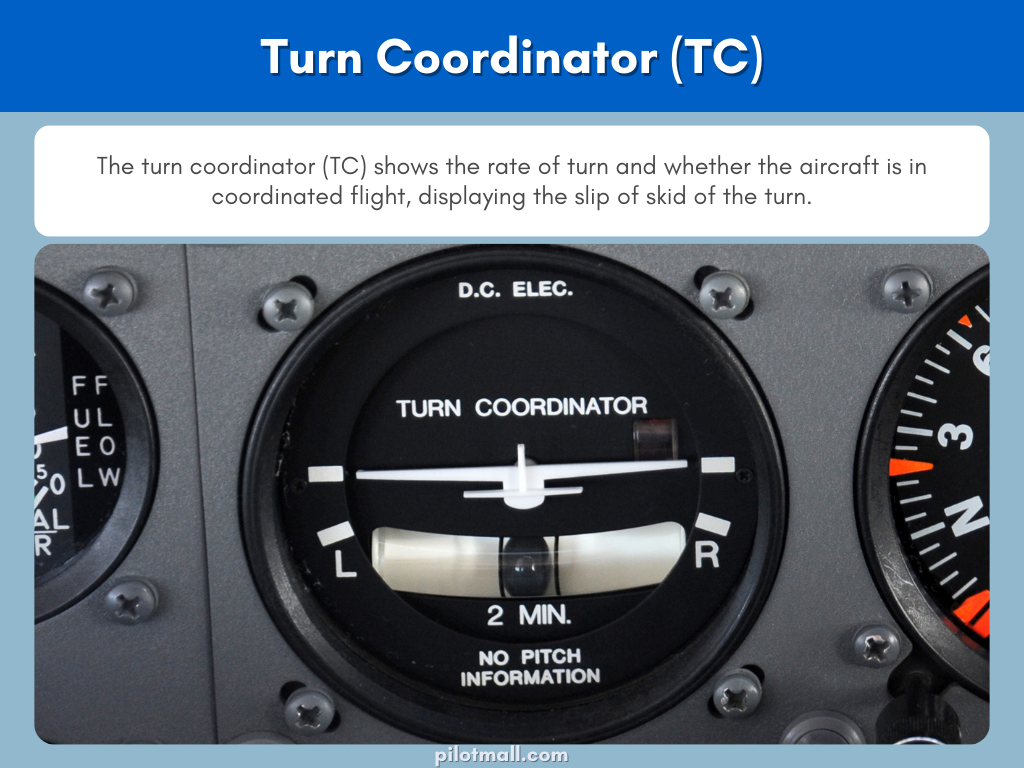
Turn Coordinator
The turn coordinator gives pilots an instrument view of their wing attitude showing if they are in straight and level flight configuration or if they are rolling left or right.
A coordinated turn means the tail of the plane is following the flight path rather than skidding to the outside or slipping to the inside of the turn. During a banking turn, the turn coordinator provides feedback to inform the pilot’s control inputs.
Student pilots learn to keep the floating ball of the coordinator in between the two vertical lines on the gauge. If the ball drifts outside these markers, the turn is uncoordinated, and the pilot needs to “step on the ball,” meaning increase rudder pressure on the side of the gauge the ball has drifted toward.
A miniature aircraft mounted above the ball rolls left or right during a turn. Its wingtips can be lined up with hash marks at the 3 o’clock and 9 o’clock positions of the gauge to hold straight and level flight. A second set of hashmarks are placed below the first set.
If a pilot needs to make a 180-degree turn to go back in their direction of travel, they can place the plane into a turn until the miniature aircraft’s lower wingtip lines up with the lower hash mark on that side. This is a standard rate turn of 3-degrees per second. Hold the turn for one minute to reverse course. Holding for two minutes would produce a 360-degree turn.
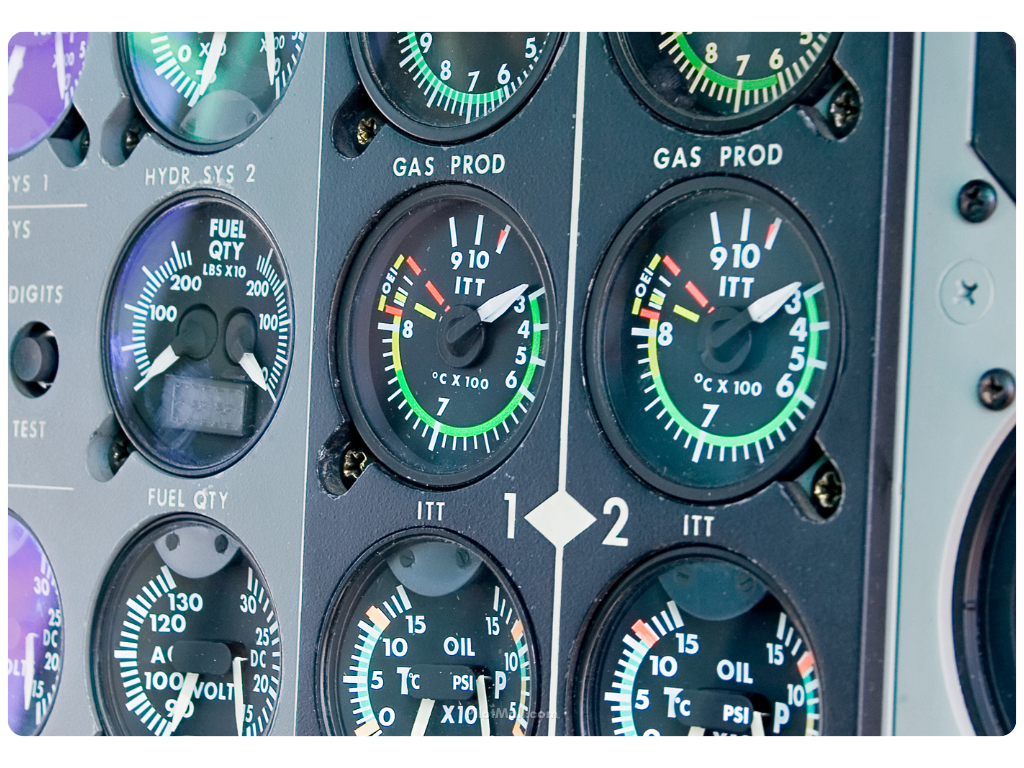 Engine Instruments
Engine Instruments
Engine instruments are perhaps the easiest category for new pilots to understand since many overlap with ground-based vehicles. Think of engine instruments as being divided up into four sub-categories based on what they measure.
The specific engine instruments depend on whether your plane is powered by a reciprocating engine or a turbine. Either way, your engine instruments measure the same overall parameters of fluid quantities, pressure, temperature, and speed.
Quantity Measuring
- Fuel
- Oil
Pressure Sensing
- Fuel
- Oil
- Manifold (reciprocating)
- Engine pressure ration (EPR)
Temperature Indicating
- Oil
- Cylinder head (reciprocating)
- Carburetor (reciprocating)
- Exhaust gas [EGT] (turbine)
- Turbine inlet [TIT] or turbine gas [TGT] (turbine)
Engine Speed Registering
- Tachometer
- N1 and N2 compressor (turbine)
Note: Turbine engines have a fuel flow meter to monitor the rate at which fuel is flowing into the engine. Turboprop and turboshaft planes have a torquemeter to gauge the amount of mechanical power the engine is producing and transferring to the shaft.
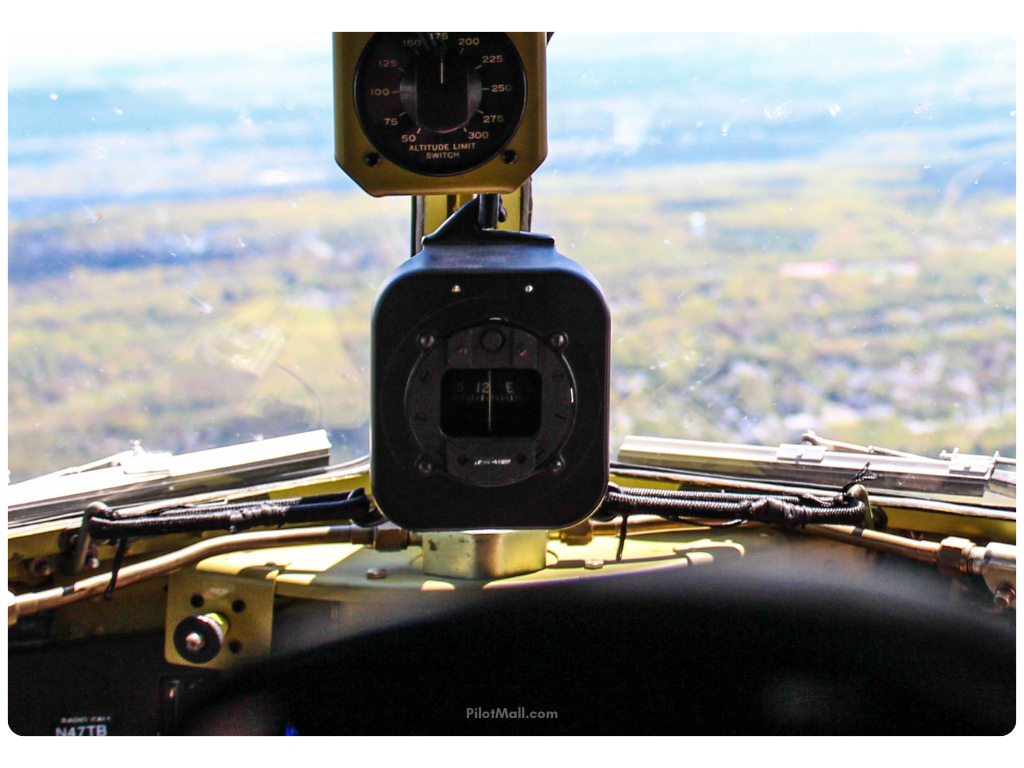 Navigation Instruments
Navigation Instruments
Navigation instruments have evolved over time. Some older systems are still in use today while others have been phased out. Today we’re only covering nav instruments that are still being used.
Magnetic Compass & Clock
The most traditional methods of navigation use magnetic compasses and clocks paired with the wind and airspeed information. We have more advanced navigational innovations now thanks to modern technology, but many planes still have clocks and compasses. Even if they’re flying a glass cockpit, pilots should know how to use a compass and clock as a backup to automated systems.
Automatic Direction Finder (ADF)
An ADF device uses ground-based radio signals to provide aircraft with their relative bearing. A non-directional radio beacon (NDB) on the ground transmits a signal on the MF or LF bandwidth.
The signal is picked up by the plane’s ADF and pilots can then home in on the beacon or use the relative bearing and heading information to plot a position.
Distance Measuring Equipment (DME)
With DME, pilots monitor their distance from a ground-based beacon based on the radio signal return delay. DME systems are often coupled with VOR beacons.
VHF Omnidirectional Radio Range (VOR)
A ground based VOR station broadcasts a signal on VHF radio. The composite signal includes the station’s Morse Code identifier plus data that allows the receiving aircraft to determine the radial, or magnetic bearing from the VOR station to the aircraft.
Instrument Landing Systems (ILS)
When instrument pilots make a precision approach to landing, they fly that approach using feedback from the two sets of dual radio beams of the ILS. The sets of beams are known as the localizer and glideslope.
The localizer beams help pilots line up horizontally on the runway centerline while the glideslope beams help pilots target the proper vertical descent path.
GPS or GNSS
Of course, the most advanced form of navigational instruments are global navigation satellite systems (GNSS), more often called global positioning systems (GPS) in the United States. This navigation technology works by using a network of orbiting satellites for geo radio positioning.
GPS helps support the modern collision avoidance system known as ADS-B. ADS-B stands for “automatic dependent surveillance broadcast). Planes can be equipped with devices that receive (ADS-B in) or transmit (ADS-B out) position location.
Pro Tip: ADS-B functionality became mandatory in certain airspace as of 2020. For more information, refer to our guides on what you need to do to get ADS-B compliant and which transponders support ADS-B.
More Aircraft Instruments Resources
Now that we’ve talked through the aircraft instruments you will find in your plane, you can learn more about the 6 pack flight instruments through studying maneuvers that rely on these instruments.
- Slip vs Skid: Which Turn Is More Dangerous [And How to Avoid It]
- Ground Reference Maneuvers: How to Ace Your Checkride
- The 4 Types of Airspeed: How Each Works (Complete Guide)
- Circling Approach: How to Accomplish it and What is it?
- Turn Coordinator Guide: What It Is and How to Use it to Avoid Slips and Skids
- How it Works: Airspeed Indicator (Extensive Guide)

![The Complete Guide to Aircraft Instruments [More Than Just the 6-Pack]](http://www.pilotmall.com/cdn/shop/articles/08f0425d85b8a961916f014247764898.jpg?v=1715242975&width=800)

